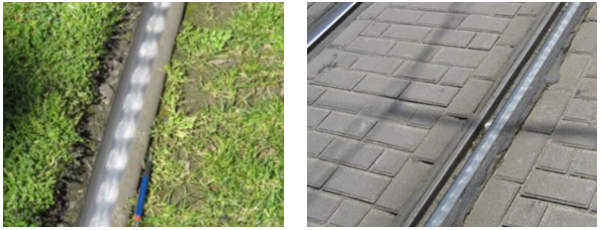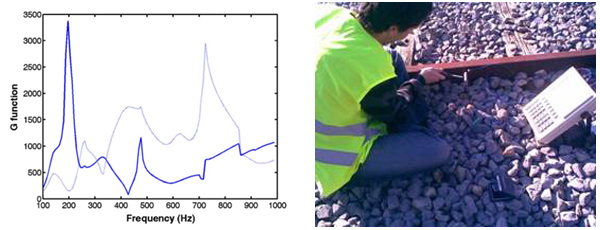Rail corrugation and wear

Rail corrugation or undulatory wear is a type of irregularity that appears on the rolling surface of the rail, characterised by an undulating geometry in the longitudinal direction of the track. This type of rail irregularity is a feature of most metro lines and suburban trains around the world, and it has an adverse effect on track life-cycle resilience and cost efficiency.
Although this type of rail defect does not pose any safety risk to train operation, it does have some major consequences. The main consequences of this type of irregularity are an increase in ride noise and higher levels of vibration.
The mathematical tool RACING (RAil Corrugation INitiation and Growth), developed by the group, includes a comprehensive track model in the frequency domain implemented using the Finite Strip Method and the Periodic Structure Theory, and takes account of deformation of the transversal section of the track and the propagation of torsion, elongation and bending waves along the infinite track. A corrugation growth function is calculated for a specific track, wheelset and ride conditions. This function ascertains any tendency towards the development of rail corrugation, so that track parameters can be optimised to reduce corrugation.

The research group has an assortment of tools and equipment to carry out experimental measurements and numerical analyses in relation to the behaviour of both the vehicle and the track:
- 4 high-performance calculation multiprocessors.
- 2 modal analysis units (a dual-channel DI2200 and a portable LMS Scadas Mobile 12-channel real-time multianalyser for noise and vibration analysis, with an instrumented hammer and accelerometers and LMS Test.Lab and LMS Test.Xpress software), to obtain receptances experimentally.
- B&K 2270-G4 sound analyser and B&K calibrator.
- Metalelektro R2S rail surface scanner to measure corrugation.
- Greenwood Engineering MiniProf Rail rail profile wear measurement device.
- 2 Vogel & Plötscher RCAD digital switch gauges to measure cants and wide gauges.
- Sysnoise, Abaqus, Ansys and MSC Nastran licences, used for structural modelling of track, wheels and wheelsets, and to obtain receptances.
-
SIMPACK and CONTACT licences, used for dynamic simulation of the railway vehicle on the track.

